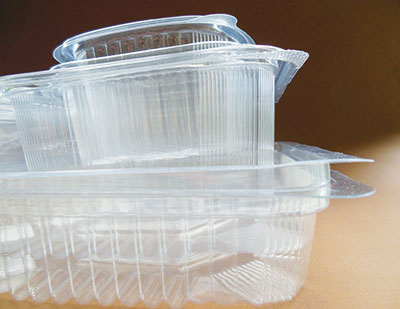Plastic packaging – Data 2012
NUMBERS AND FACTS Growth trends of production, with particular reference to rigid packaging: bottles, flacons, buckets, trays, bins, blisters, honeycombs, crates, pallets, flexible tubes and closures.
 The year 2012 ended with a 5.3% drop in production of total plastic packaging (both domestic demand and exports have fallen, while imports have risen). The slowdown of domestic demand is due, in addition to the reduced consumption by families, also by another significant drop in the use of plastic grocery bags: the biodegradable shoppers put on the market have proved as unpopular, especially in department stores. The rigid packaging sector, the subject of the present analysis, saw a production of 1,647,000 t (59% of total plastic packaging production): in 2012, the sector shrank by 4%. 49% of production was destined for foreign markets, 51% for the Italian market. Exports evidence particularly high values in two sectors: closures (69%) and accessories, including straps, adhesive tape, protective material, etc. (33%).
The year 2012 ended with a 5.3% drop in production of total plastic packaging (both domestic demand and exports have fallen, while imports have risen). The slowdown of domestic demand is due, in addition to the reduced consumption by families, also by another significant drop in the use of plastic grocery bags: the biodegradable shoppers put on the market have proved as unpopular, especially in department stores. The rigid packaging sector, the subject of the present analysis, saw a production of 1,647,000 t (59% of total plastic packaging production): in 2012, the sector shrank by 4%. 49% of production was destined for foreign markets, 51% for the Italian market. Exports evidence particularly high values in two sectors: closures (69%) and accessories, including straps, adhesive tape, protective material, etc. (33%).
Imports remain modest, although slightly higher than in 2011. Particularly important for imports are closures (52% of total imports) and pre-formed bottles partially derived from r-PET. Recycled plastic has been used for production for a few years already and, following the lifting of bans on its use in food packaging, this practice has since intensified.
Types and areas of use
Rigid plastic packaging has numerous sectors of application: food (fresh and preserved), beverages, technical products, etc.
In terms of production, these can be divided into five sub-categories:
- bottles for food liquids (29.7%);
- bottles, flacons and various containers for technical non-food products (28%);
- tubs, honeycombs, blisters, trays and tubes (24.8%);
- closures (7.5%);
- various accessories, including ropes, straps, expanded chips, etc. (10%).
After undergoing the effects of the 2-year recession of 2008/2009 and the general recovery of 2010, in 2011 a new recession began for all five areas of use, culminating in 2012. Unfortunately, 2013 also began with a general slowdown, affecting the domestic market in particular.
Bottles. As far as concerns the sectors of use for plastic bottles and flacons, 79% is destined for the food area (food and beverages), while 21% is destined for the non-food area. In 2012, the non-food sector languished, while activity in food and beverage increased. In particular, during the course of 2012, bottles “resisted” in the beverage sector as well as in the cosmetics/pharmaceutical sector; their use in olive oil and milk and dairy products increased, while their use in domestic detergency dropped. Bottle production rose by 5% for all other sectors of application.
Plastic flacons and bottles present growth potential in the sectors of tomato sauce, wine and vinegar, ready sauces and fruit juices.
Closures. Rigid plastic closures production continued to suffer in 2012, but this type continues to gain ground against all other closure systems, particularly in the areas of spirits, digestifs and aperitifs, etc.
 Trays and others. As for the other large market area of rigid containers, which includes trays, buckets, pallets, crates, flexible tubes, blisters, etc., it is estimated that 77% is accounted for by the macro-aggregate of food, while 23% is destined for non-food.
Trays and others. As for the other large market area of rigid containers, which includes trays, buckets, pallets, crates, flexible tubes, blisters, etc., it is estimated that 77% is accounted for by the macro-aggregate of food, while 23% is destined for non-food.
In the food sector, thin-walled packaging (tubs, trays, cups, blisters, etc.) present the most impressive growth trends.
The consolidation of these types of packaging is driven mainly by the development of pre-portioned and pre-weighed foods, as well as ready meals displayed on freezer shelves, which are gaining importance in department stores, but also in traditional retail channels.
Also worth note are the growth potentials of blister packs, which, created for pharmaceutical and cosmetics products, are gaining market shares in sectors such as IT accessories, stationery and metal smallware.
The plastic crate, used as transport packaging in the fresh fruit and vegetables sector, is undergoing significant and progressive growth (both the disposable and recyclable versions): indeed, it has now reached a share of approximately 60%.
Plinio Iascone
Istituto Italiano Imballaggio




















